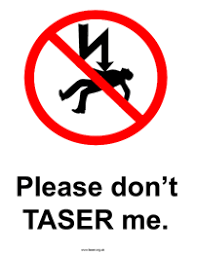
As an educator and writer, I continually strive to improve the clarity and accuracy of what is taught about the history of this country. Too often, we are presented with what is considered to be a traditional mono-cultural perspective of history.
Most Americans celebrate this day of feasting and family without acknowledging the entire historical context in which events took place between the Pilgrims and the North American Indians. Many are also insensitive to those Native (and other) Americans well versed in their history and culture who may be a little reluctant to romaniticise the holiday. The "First Thanksgiving" story generally taught in school is a mix of both history and myth.
Thanksgiving or Thanksgiving day, presently celebrated on the fourth Thursday in November, has been an annual tradition in the United states since 1863, although it wasn't until 1941 that it became a federal holiday due to the continuous efforts of Sarah Josepha Hale, a magazine editor who wrote a number of articles for the cause. Now identified as a secular holiday, Thanksgiving was historically a religious observation to give thanks to God for the harvests of the land.
The Pilgrims/ Puritans, a sub sect, or splinter group of the Puritan Movement taking place in England crossed the Atlantic Ocean in a revolutionary quest to build a new society. Their doctrine was in accord with Calvinsim, which they perceived as the "pure" form of the early Christian Church. Their aim was to "purify" first themselves and then everyone else of everything they did not accept in the own interpretation of scripture.
In 1621, the Plymouth colonists and Wampanoag (pronounced Wam pa NO ag) Indians shared an autumn harvest feast which is acknowledged today as one of the first Thanksgiving celebrations in the colonies, although that is not accurate. Native Americans throughout the Americas, including the Pueblo, Cherokee, Creek and many others organized harvest festivals, ceremonial dances, and other celebration of thanks for centuries before the arrival of Europeans in North America. The Algonkian tribes held six Thanksgiving festivals during the year.
Although it is uncertain why the Wampanoag originally joined the gathering, for three days the they feasted with the Pilgrims. It was a special time of friendship between two very different groups of people. A peace and friendship agreement was made giving the Pilgrims the clearing in the forest where the old Patuxet village once stood to build their new town of Plymouth.
It would be very good to say that this friendship lasted a long time; but, unfortunately, that was not to be. More English people came to America, and they were not in need of help from the Indians as were the original Pilgrims. Many of the newcomers forgot the help the Indians had given them. Mistrust started to grow and the friendship weakened.
The Pilgrims started telling their Indian neighbors that their Indian religion and Indian customs were wrong. The Pilgrims displayed an intolerance toward the Indian religion similar to the intolerance displayed toward the original Pilgrims who used means such as deception, treachery, torture, war and genocide (sound familiar African Americans?) as methods of persuasion. The relationship deteriorated and within a few years the children of the people who ate together were killing one another in what came to be called King Phillip's War.
* * *
My intention for this year's Thanksgiving blog is to inform as well as make a plea to public school institutions to make a stronger commitment to multi-cultural education that is both historically accurate and unbias. The "D" spot would like to take this time to give a special thanks to our readers, followers and contributors.
Sources:
They Came Before Columbus by Ivan Van Sertima





 Too Hot to Handel Live Broadcast
Too Hot to Handel Live Broadcast




 http://www.lovehughlongtime.com/
http://www.lovehughlongtime.com/









